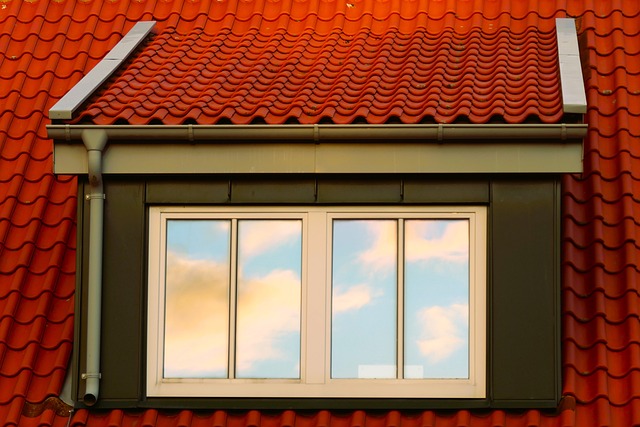Flat roof installation and maintenance are specialized processes crucial for the durability and longevity of both commercial and residential buildings. Key aspects include strategic material selection (like EPDM and TPO), meticulous preparation of the substrate, accurate underlayment placement, and regular inspections to prevent leaks and structural damage caused by extreme temperatures, rainfall, and UV radiation. Regular maintenance by flat roof specialists extends system life, enhances energy efficiency, minimizes repair needs, and maximizes property value. Choosing the right waterproof materials and collaborating with experienced contractors are vital for achieving durable, long-lasting results.
In the realm of roofing, flat roofs stand out for their practical design and extended lifespan when installed and maintained properly. This article guides you through the essential aspects of high-quality flat roofing materials, from understanding the impact of installation on longevity to exploring commercial and residential options. Discover the best practices in choosing durable materials, implementing effective flat roof services, and maintaining your rooftop investment for years to come. Whether you’re looking for commercial flat roofing solutions or comprehensive residential flat roofs, this guide offers invaluable insights into achieving a waterproof, long-lasting flat roof.
- Understanding Flat Roof Installation and Its Impact on Longevity
- Commercial Flat Roofing: Choosing the Right Materials for Durability
- Residential Flat Roofs: A Comprehensive Guide to Waterproof Solutions
- Flat Roof Maintenance: Ensuring Longevity through Regular Care
Understanding Flat Roof Installation and Its Impact on Longevity
Understanding Flat Roof Installation is key to unlocking a durable and long-lasting commercial or residential flat roofing system. Unlike sloped roofs, flat roofs require meticulous planning and specialized techniques due to their unique design. A successful installation involves careful preparation of the substrate, precise placement of underlayment, and the selection of high-quality flat roofing materials that offer superior protection against leaks and damage.
Proper flat roof installation significantly impacts longevity by creating a robust barrier against environmental elements, including extreme temperatures, heavy rainfall, and UV radiation. Waterproof flat roofs are essential to prevent water penetration, which can lead to structural damage and compromise the integrity of the building. Flat roof specialists emphasize the importance of regular maintenance and timely repairs to address any issues promptly, ensuring the longevity and functionality of these roofing systems for years to come.
Commercial Flat Roofing: Choosing the Right Materials for Durability
Commercial flat roofing requires a thoughtful selection of materials to ensure longevity and durability. When it comes to choosing the right flat roof installation or repair options, property owners and managers should consider the specific needs of their structures. For instance, in regions with harsh climates, a waterproof flat roof solution is essential to prevent leaks and structural damage. Flat roofing materials like EPDM (Ethylene Propylene Diene Monomer) and TPO (Thermoplastic Olefin) offer superior resistance to extreme temperatures and UV rays, making them popular choices for both commercial and residential flat roofs.
These durable flat roofs not only provide an effective barrier against the elements but also contribute to energy efficiency due to their reflective properties. Flat roof specialists often recommend regular maintenance and inspections to extend the life of these systems. By opting for high-quality flat roofing materials and professional flat roof services, building owners can ensure minimal flat roof repair needs and maximize the benefits of a well-installed waterproof flat roof, enhancing the overall value and longevity of their properties.
Residential Flat Roofs: A Comprehensive Guide to Waterproof Solutions
Residential flat roofs require a thoughtful approach to ensure longevity and protect against leaks. When it comes to flat roof installation or repair, property owners have a range of flat roofing materials to choose from, each offering unique benefits in terms of durability, water resistance, and low-maintenance characteristics. Commercial and residential properties alike benefit from these advanced solutions designed to withstand the elements.
Understanding the intricacies of flat roof services is key to making informed decisions. Professional flat roof specialists employ specialized techniques for flat roof repair and maintenance, ensuring that each component is sealed tightly to prevent water intrusion. A well-maintained flat roof can last for decades, providing a robust and dependable barrier against weather conditions. Choosing the right waterproof flat roof materials and working with experienced contractors are crucial steps in achieving durable, long-lasting results for any residential or commercial flat roofing project.
Flat Roof Maintenance: Ensuring Longevity through Regular Care
Regular maintenance is key to extending the lifespan of a flat roof and ensuring its structural integrity. Unlike pitched roofs, flat roofs require a different set of care practices due to their unique design and materials. A comprehensive flat roof maintenance routine involves several crucial steps. Firstly, inspect the roof for any signs of damage, such as cracked membranes, missing or damaged shingles, or leaks. Addressing these issues promptly is essential to prevent further complications. Regular cleaning is also vital; removing debris, dirt, and algae buildup ensures optimal drainage and prevents moisture-related problems.
Additionally, maintaining proper ventilation is a often overlooked but critical aspect of flat roof care. Adequate air circulation helps regulate temperature, reduces pressure buildup, and slows down the degradation process of roofing materials. Sealant and coating maintenance should also be part of the routine; these protective layers need to be reapplied over time to maintain their waterproof properties, especially in commercial flat roofing applications where durability is paramount. By incorporating these simple yet effective practices into a regular schedule, homeowners and building managers can significantly enhance the longevity of their flat roofs, saving them from costly repairs and replacements.
In light of the above discussions on flat roof installation, it’s clear that choosing the right materials and implementing proper maintenance is key to achieving longevity for both commercial and residential flat roofs. By opting for high-quality flat roofing materials and adopting regular care practices, homeowners and businesses alike can enjoy durable, waterproof flat roof solutions that stand the test of time. Rely on flat roof specialists to guide you in selecting the best flat roof services and products, ensuring your investment remains protected for years to come.
